Digital Poster
Non-Invasive Imaging of Hepatic & Pancreatic Iron & Fat
ISMRM & ISMRT Annual Meeting & Exhibition • 10-15 May 2025 • Honolulu, Hawai'i

 |
Computer Number: 81
2658. Pancreatic
T1, T2, T2* and PDFF values in healthy pancreas and spectrum of
pancreatitis
M. Gunasingh, N. Suryadevara, S. Naidu, T. Putta, S. Kaza,
J. Sreekumar, J. Neelavalli
Philips India Limited, Chennai, India
Impact: Multiparametric MRI of pancreas can reveal
tissue properties which are not apparent to the naked eye on
conventional MRI sequences, and can help assess pancreatic
health, identify subclinical disease, and potentially
predict the nature course of illness.
|
|
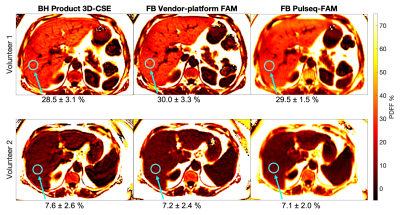 |
Computer Number: 82
2659. Evaluation
of a Vendor-Agnostic, Free-Breathing Fat and Iron Quantification
Technique in Adults and Children
J. Tang, D. Tamada, J-F Nielsen, J. Starekova, A.
Anagnostopoulos, A. Murphy, N. Duritsa, A. Carrel, I. Rosado
Mendez, S. Reeder, D. Hernando
University of Wisconsin-Madison, Madison, United States
Impact: Free-breathing Pulseq-FAM has excellent
performance in adults and children, and is easily deployable
across multiple vendors. Therefore, Pulseq-FAM may enable
cross-center studies and clinical trials for which sequence
harmonization is crucial, and may encourage additional
vendor-native implementations for clinical use.
|
|
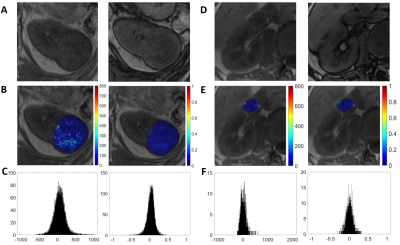 |
Computer Number: 83
2660. Fat
quantification map facilitates intra-tumoral microscopic fat
visualization, detection and quantification
L. Xu, Y. Zhong, W. Cui, D. Luo, Z. Liu
Department of Radiology, National Cancer Center/National Clinical Research Center for Cancer/Cancer Hospital & Shenzhen Hospital, Chinese Academy of Medical Sciences and Peking Union Medical College, 113 Baohe Avenue, 518116, Shenzhen, China, Shenzhen, China
Impact: Fat-quantification maps can improve the
indentification and quantification of microscopic fat,
enhancing differentiation of angiomyolipoma and renal cell
carcinoma, which can be integrated seamlessly into clinical
workflows for a systematic approach.
|
|
 |
Computer Number: 84
2661. MRI-PDFF
evaluation of frequency difference electrical impedance
tomography for low-cost, non-invasive liver fat quantification
C. Rettenmeier, K. Edwards-Calma, U. Lim, R. Chan, J. Li, Z.
Kon, M. Buras, Z. Yu, L. Le Marchand, V. A. Stenger, S. Kwee
University of Hawai'i at Mānoa, Honolulu, United States
Impact: fd-EIT could have a large impact on early
diagnosis and monitoring of liver disease. Further
development and validation in larger cohorts is needed to
support the generalizability of our findings.
|
|
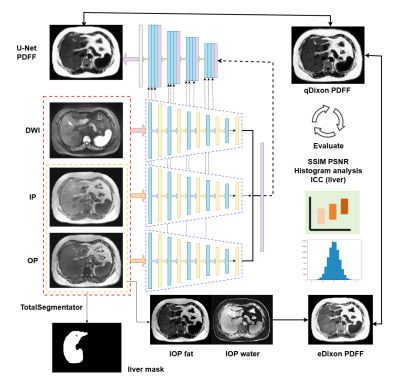 |
Computer Number: 85
2662. Deep
Learning-Driven Estimation of Hepatic Proton Density Fat
Fraction from Routine MRI Sequences as a Substitute for
Quantitative Dixon Imaging
A. Wang, L. Qian, Y. Song, L. Jiang, C. Wang, G. Yang
Shanghai Key Laboratory of Magnetic Resonance, East China Normal University, Shanghai, China
Impact: This approach could make PDFF more accessible
using standard MRI sequences, enabling liver fat
quantification without the need for qDixon imaging. It also
facilitates the early detection and monitoring of liver
steatosis in routine clinical settings.
|
|
 |
Computer Number: 86
2663. Comparative
Analysis of Liver Iron Concentration: Inline R2* of mDixon-Quant
and Multi-Echo Gradient Echo Versus Spin Echo Method
J. Zhang, S. Hipko, N. Ali, D. Akselrod
University of Vermont Medical Center, Burlington, United States
Impact: The Liver Iron Concentration (LIC) calculated
using the inline R2*maps from both 3D mDixon and multi-echo
GRE methods (mGRE) (each with single breath-hold of <12s)
strongly correlated to the FDA approved Ferriscan spin echo
(SE) based method.
|
|
 |
Computer Number: 87
2664. Phase-Based
R2 Mapping for Single Breath-Hold Whole-Liver Iron
Quantification : Clinical Validation
D. Tamada, R. Navaratna, J. Weaver, D. Hernando, S. Reeder
University of Wisconsin-Madison, Madison, United States
Impact: PB-R2 mapping enables rapid, accurate
whole-liver iron quantification within a single breath-hold,
enhancing clinical efficiency and patient comfort. It may
improve iron overload assessment and inspire further
research to address fat bias in R2 mapping.
|
|
|
Computer Number: 88
2665. Quantitative
assessment of liver fibrosis by using hepatocyte uptake ratio
based on T1 mapping
G. Zhang, X. Li, X. Quan, Q. Chan, X. Jin
Department of Radiology, Zhujiang Hospital of Southern Medical University, Guangzhou, China, guangzhou, China
Impact: To our knowledge, this study marks the first
time hepatocyte uptake ratio has been used to stage liver
fibrosis, which offers a fresh perspective and paves the way
for more accurate evaluation for liver fibrosis in the
future.
|
||
 |
Computer Number: 89
2666. Baseline
predictors of adipose tissue proton density fat fraction (PDFF)
reduction in participants undergoing metabolic bariatric surgery
V. Martins, M. Silva, D. Batakis, J. Weeks, Y. Covarrubias,
T. Wolfson, W. Henderson, D. Harris, E. Grunvald, J.
Schwimmer, R. Broderick, G. Jacobsen, L. Funk, A. Lidor, R.
Agni, R. Sappenfield, S. Reeder, C. Sirlin
University of California San Diego, San Diego, United States
Impact: Adipose tissue PDFF, with further research and
validation, could aid as a novel metric in monitoring
metabolic health in patients with obesity and during weight
loss.
|
|
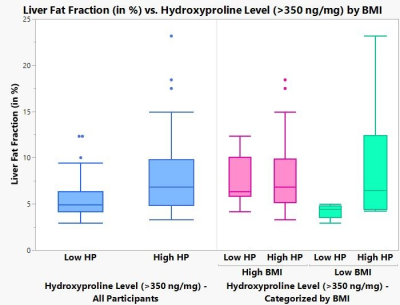 |
Computer Number: 90
2667. Ectopic
abdominal fat measured by MRI-PDFF compared to severity of
subcutaneous adipose tissue fibrosis
S. Anbu Rajan, S. Noworolski, E. Castellanos, D. Alba, M.
Gibbons, P. Hunt, S. Koliwad
University of California, San Francisco, San Francisco, United States
Impact: SAT fibrosis is associated with high liver and
pancreatic fat fraction and high visceral to subcutaneous
fat volume ratio, suggesting worse metabolic health,
particularly for those with low BMI and for females.
|
|
 |
Computer Number: 91
2668. Deuterium
MRS for in vivo measurement of lipogenesis in the liver
A. Gursan, R. de Graaf, M. Thomas, J. Prompers, H. De Feyter
University Medical Center , Utrecht, Netherlands
Impact: The initial observations in vivo in a rat model
provide a basis for this approach to be translated and
develop noninvasive, quantitative measurements of hepatic
DNL in humans.
|
|
 |
Computer Number: 92
2669. Novel
multi-parameter MRI-based MPET1 Model for Identification of
Metabolic dysfunction-associated steatohepatitis
W. Ma, X. Huang, Y. Sun, Z. Qin, W. Tan, J. Yuan
Shuguang Hospital Affiliated to Shanghai University of Traditional Chinese Medicine, Shang Hai, China
Impact: The MEPT1 model based on multi-parameter MRI is
more accurate and superior to MAST score in noninvasive
identification of MASH patients, which can assist clinical
identification and evaluation of MASH patients.
|
|
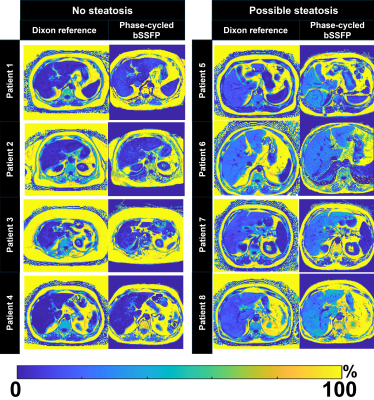 |
Computer Number: 93
2670. Hepatic
PDFF quantification using phase-cycled bSSFP: First-in-patient
study
B. Acikgoz, A. Mackowiak, G. Bongiolatti-Rossi, T. Hilbert,
J-B Ledoux, N. Vietti-Violi, J. Bastiaansen
Inselspital, Bern University Hospital, University of Bern, Bern, Switzerland
Impact: Fat fraction mapping with phase-cycled bSSFP is
feasible in patients, presenting a non-invasive alternative
to biopsy and MRS. Its high SNR and robustness against T1
bias might make it a powerful alternative to existing
methods in liver steatosis assessment.
|
|
 |
Computer Number: 94
2671. Metabolic
dysfunction-associated steatohepatitis (MASH) dampens liver fat
reduction in participants after metabolic bariatric surgery
V. Martins, D. Batakis, Y. Covarrubias, J. Weeks, T.
Wolfson, W. Henderson, D. Harris, E. Grunvald, J. Schwimmer,
R. Broderick, G. Jacobsen, L. Funk, A. Lidor, R. Agni, R.
Sappenfield, S. Reeder, C. Sirlin
UC San Diego, San Diego, United States
Impact: For patients with obesity and MASH, adjuvant
treatment may be needed to achieve the same total goal
reduction in liver fat as patients without MASH.
|
|
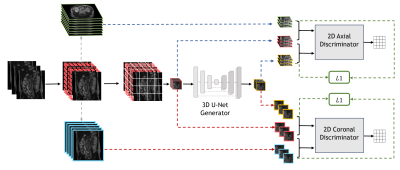 |
Computer Number: 95
2672. Isotropic
Abdominal MRI Restoration from Anisotropic Data using Generative
Multi-Plane Deep Learning
R. Benisty, Y. Shteynman, M. Porat, A. Illivitzki, M.
Freiman
Technion - Israel Institute of Technology, Haifa, Israel
Impact: Our model introduces simultaneous multi-plane
self-supervised learning method to restore isotropic MRI
from anisotropic data. The isotropic volumes improve
volumetric analysis and 3D reconstructions, showing strong
potential to enhance clinical diagnostics. It adapts to
various contrast types and acquisition methods.
|
The International Society for Magnetic Resonance in Medicine is accredited by the Accreditation Council for Continuing Medical Education to provide continuing medical education for physicians.